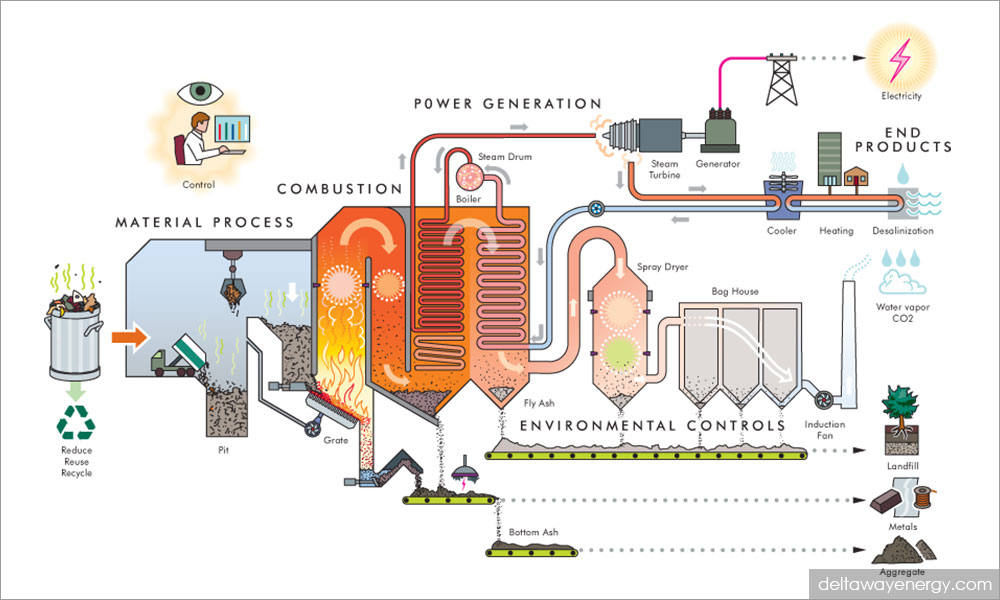
I refer to the article titled "Clearing the air on Bukit Tagar Sanitary Landfill" written by Chock Eng Tah, the MD of KUB-Berjaya Enviro Sdn Bhd (the company that owns the Bukit Tagar Sanitary Landfill, BTSL) in response to my original article related to the incinerator project (commercially known as Waste-To-Energy Production, WEP) and the concerns raised by several NGOs in Kepong.
I would like to reiterate that my original article was not written to attack BTSL but to highlight the need for a WEP plant (diagram) to support the growing population in Klang Valley and the major cities in Malaysia and making a comparison to a sanitary landfill.
The author has chosen to defend BTSL which is an expected response as it impacts their long-term business. WEP is a competing technology to that of a sanitary landfill and the author was looking at BTSL from his company’s profit-and-loss perspective, and not the long-term impact on the environment.
I would like to point out some points of contention that were presented in the write-up. The author has claimed that BTSL can last for 100 years. We all can do our maths by plotting the waste production and doing a forecast analysis to find a meeting point. Our own internal assessment shows that the landfill will last not more than 50 years. Factoring population growth, urbanisation boundaries and waste production per household will give the necessary numbers.
What do we do when a landfill is full? Do we open more landfills? Is the author saying that since it can last 100 years, we don't have to worry about it? That it’s a problem for the future generation to solve? I beg to differ. We need to create a better future for the next generations to come and not pass down problems for them to sort out.
BTSL today sits on 700 acres of land. This is arable land that can be used for food production. When this site is filled up, do we continue to destroy the environment and reduce the much-needed land by allocating a few thousand acres of land nationwide for a landfill? When do we stop? The non-biodegradable waste will continue to be buried in the ground for thousands of years to come. Why did advanced countries around the world switch to WEP from landfills?
While the 3R policy (Reduce, Reuse, Recycle) is essential in the overall strategy in waste management, one can see that advanced countries like Singapore, Japan and Europe don't waste their land by using it for landfills. They see the long-term value of having land and they have done their own evaluation on the most appropriate approach in waste management. Combining 3R efforts, WEP, ash landfill is the sustainable strategy. One can peruse the data at The Confederation of European WEP website (CEWEP) which will support our argument.
BTSL argues that the lifespan of a waste-to-energy (WTE) machine is about 25 years. No machines last forever even it is well maintained. Technology is evolving and the money generated from energy production should go into investment for future technology so that we can develop better WEP plants. It is an ongoing evolution that goes with every production line irrespective of the purpose of the plants.
The BTSL representative is mistaken when he says that I accused the government of being incompetent. In actual fact, I was referring to the public perception of the government that made them fearful. The public is not confident in the system, or that the decision made will protect public interests. It would be the government’s responsibility to enhance public confidence.
In the cost comparison, it is quite clear that BTSL representative did not do an apples-to-apples comparison and has not assigned any cost to the land value where his company’s landfill is located.
How much does it cost the local authorities to send the waste to Bukit Tagar? What’s the economic impact of pollution that comes from the landfill? Leachate that leaks into the underground water table is a known problem. Methane emission is another and landfills do not capture all this effectively. Published data shows that methane is far more dangerous than carbon dioxide and the WTE plant can actually capture 100% of the methane produced compared to landfill which can only capture 50%.
I am impressed by the many awards that BTSL has won. In the corporate world, we all know about the many awards being dished out. Some have value and others are for the purpose of marketing and given by a professional event company. Awards are meaningless unless it reflects the total impact on the people in terms of carbon footprint, environmental impact, sustainable living and many more.
On a similar scale, WTE companies also can show their trophies but to me, these have no value other than marketing. What is more valuable is the meeting of standards and the impact of the two systems on the people and the environment.
We can continue to debate about which system is better from a commercial point of view but that is not the objective here. The focus should be on having a sustainable system that improves the quality of life for Malaysians.
To preserve land for the future generations, we should focus on 3R, WTE and ash landfills. Rather than defending sanitary landfills as the only way forward, BTSL is urged to explore having a WTE plant and emulating the actions taken by the first-world nations globally. - Mkini



No comments:
Post a Comment
Note: Only a member of this blog may post a comment.